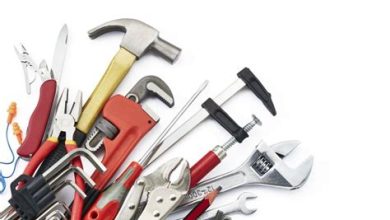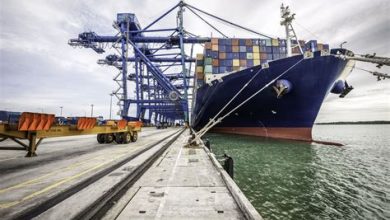Exploring the Common Types of Heavy Equipment Used in Construction Projects
Welcome, readers, to our comprehensive guide on the common types of heavy equipment used in construction projects. In this article, we will delve into the various machines and tools that play a crucial role in the successful completion of construction projects. From excavators to bulldozers, each piece of heavy equipment has its unique strengths and weaknesses. Let’s explore the world of construction machinery together.
Introduction to Heavy Equipment in Construction
Construction projects rely heavily on the use of specialized equipment to move earth, materials, and structures efficiently. The right equipment can make a significant difference in the productivity and safety of a construction site. In this section, we will provide an overview of the common types of heavy equipment used in construction projects.
Bulldozers are powerful machines with a wide blade at the front that pushes materials such as soil, sand, or rubble. These versatile machines can also be equipped with rippers at the back to break up hard ground or rocks.
Excavators are another essential piece of equipment in construction. These machines have a bucket on the end of an articulated arm that is used for digging and moving materials. Excavators come in various sizes and configurations to suit different types of construction projects.
Crane trucks are used to lift and transport heavy materials on construction sites. They are equipped with a boom and winch system that allows them to reach high heights and lift heavy loads. Crane trucks are essential for tasks such as setting up steel beams or pouring concrete at elevated heights.
Backhoes combine the functions of a bulldozer and an excavator into one versatile machine. They have a digging bucket on the front and a small backhoe on the back, making them ideal for tasks that require both digging and lifting capabilities.
Dump trucks are used to transport materials such as soil, gravel, or debris on construction sites. These trucks have a hinged bed that can be raised to dump the materials at the desired location. Dump trucks come in various sizes and configurations to suit different hauling needs.
Wheel loaders are used to move materials such as soil, sand, or gravel on construction sites. These machines have a front-mounted bucket that is used to scoop up and transport materials. Wheel loaders are versatile and can be used for a wide range of tasks on construction sites.
Compact track loaders are similar to skid steer loaders but have a tracked undercarriage instead of wheels. This design gives them better traction and stability on rough or soft terrain. Compact track loaders are versatile and can be used for tasks such as digging, grading, and lifting materials on construction sites.
Strengths and Weaknesses of Common Types of Heavy Equipment
Each type of heavy equipment used in construction projects comes with its unique strengths and weaknesses. Understanding these factors can help construction professionals make informed decisions about which machines to use for specific tasks.
Bulldozers
Strengths:
– Powerful and versatile
– Efficient at pushing and moving materials
– Can be equipped with various attachments for different tasks
Weaknesses:
– Limited mobility in tight spaces
– Not suitable for precise or delicate tasks
– High fuel consumption
Excavators
Strengths:
– Excellent digging and lifting capabilities
– Versatile attachments for different tasks
– Can reach high heights and depths
Weaknesses:
– Limited mobility on rough terrain
– Higher maintenance costs
– Requires skilled operators
Crane Trucks
Strengths:
– Excellent lifting capabilities
– Reach high heights and distances
– Versatile for different tasks
Weaknesses:
– Limited mobility on rough terrain
– Expensive to purchase and operate
– Requires skilled operators
Backhoes
Strengths:
– Versatile for digging and lifting tasks
– Compact size for tight spaces
– Easy to operate for beginners
Weaknesses:
– Limited reach and digging depth
– Less efficient for heavy-duty tasks
– Slower operation compared to specialized machines
Dump Trucks
Strengths:
– Excellent hauling capabilities
– Versatile for different materials
– Easy to operate and maintain
Weaknesses:
– Large turning radius
– Limited off-road capabilities
– Not suitable for precise placement of materials
Wheel Loaders
Strengths:
– Efficient material handling capabilities
– Versatile for different tasks
– Easy to operate and maintain
Weaknesses:
– Limited mobility on rough terrain
– Higher fuel consumption
– Expensive to purchase and operate
Compact Track Loaders
Strengths:
– Superior traction on rough terrain
– Versatile for different tasks
– Compact size for tight spaces
Weaknesses:
– Slower speed compared to wheeled loaders
– Higher initial cost
– Limited lifting capabilities
Common Types of Heavy Equipment Used in Construction Projects
| Equipment | Description | Common Uses |
|---|---|---|
| Bulldozer | Powerful machine with a wide blade for pushing materials | Clearing land, leveling surfaces, moving debris |
| Excavator | Machine with a digging bucket for earthmoving tasks | Excavation, trenching, material handling |
| Crane Truck | Truck with a crane for lifting and moving heavy materials | Setting up structures, lifting materials |
| Backhoe | Combination of a bulldozer and excavator for digging tasks | Digging trenches, lifting materials |
| Dump Truck | Truck with a hinged bed for dumping materials | Transporting soil, gravel, debris |
| Wheel Loader | Machine with a front-mounted bucket for material handling | Moving soil, sand, gravel |
| Compact Track Loader | Skid steer loader with a tracked undercarriage for stability | Digging, grading, lifting materials |
Frequently Asked Questions
Q: What are the main considerations when choosing heavy equipment for a construction project?
A: The main considerations include the type of project, site conditions, budget, and required tasks.
Q: How can operators ensure the safe operation of heavy equipment on construction sites?
A: Operators should undergo proper training, follow safety protocols, and conduct regular equipment inspections.
Q: What are some common maintenance tasks for heavy equipment?
A: Regular maintenance tasks include oil changes, filter replacements, greasing components, and inspecting for wear and tear.
Q: How can heavy equipment contribute to environmental sustainability in construction projects?
A: Fuel-efficient machines, proper waste management, and recycling materials are ways heavy equipment can promote sustainability.
Q: Can heavy equipment be rented or leased for short-term projects?
A: Yes, many construction companies offer rental and leasing options for heavy equipment to meet short-term project needs.
Q: What are some advancements in heavy equipment technology in the construction industry?
A: Advancements include GPS tracking, telematics, and automated features to improve efficiency and safety.
Q: How can project managers optimize the use of heavy equipment on construction sites?
A: Project managers should plan equipment usage efficiently, schedule maintenance tasks, and monitor equipment performance to maximize productivity.
Conclusion
In conclusion, the common types of heavy equipment used in construction projects are essential for the success of any building endeavor. From bulldozers to excavators, each piece of machinery plays a vital role in completing tasks efficiently and safely. By understanding the strengths and weaknesses of each type of equipment, construction professionals can make informed decisions to enhance project outcomes.
We encourage our readers to explore the world of heavy equipment in construction further and consider the various factors when choosing the right machines for their projects. Investing in quality equipment and proper maintenance can make a significant difference in the success of construction endeavors. Thank you for joining us on this journey through the world of heavy equipment in construction projects.
Disclaimer: The information provided in this article is for educational and informational purposes only. Readers should consult with industry professionals for specific advice and guidance related to heavy equipment in construction projects.


